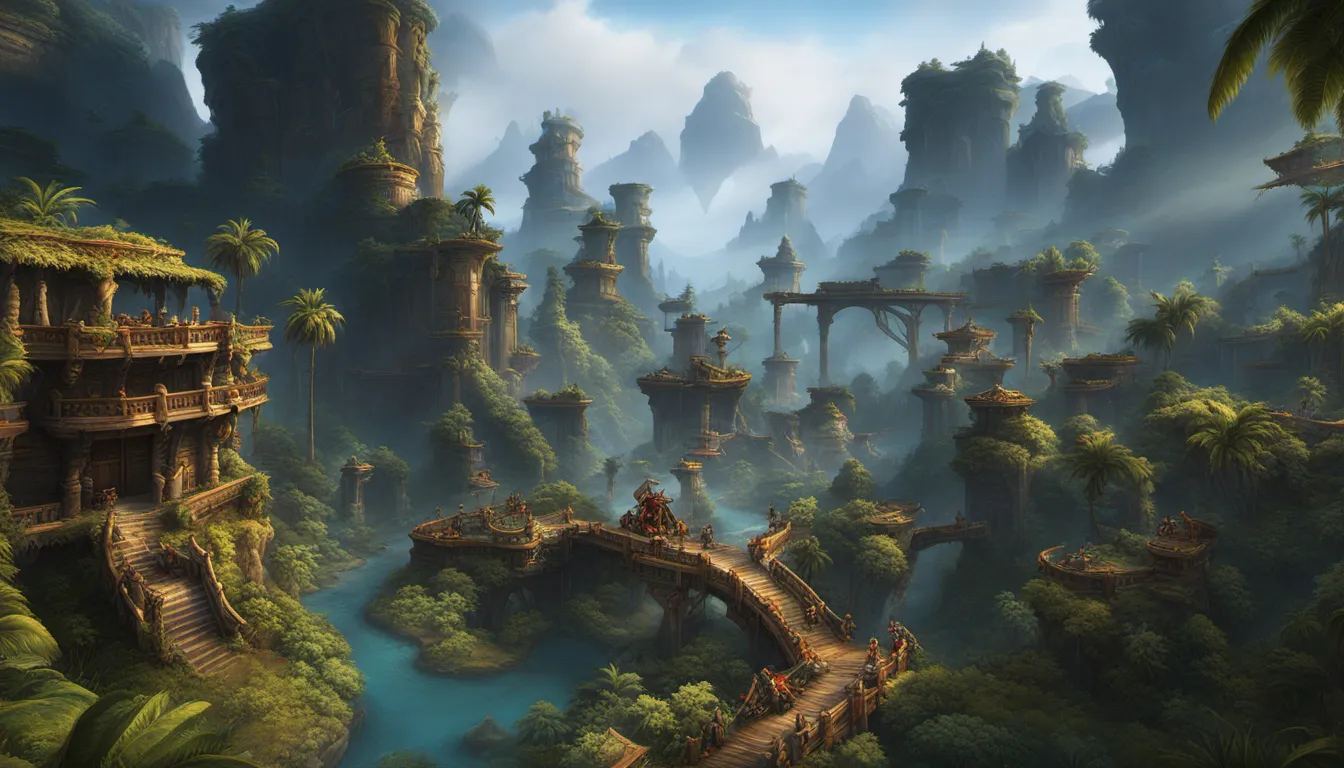Open-world games often reap the benefits of immersing players in the midst of epic conflicts and uprisings, fought across vibrant and captivating realms, where a malevolent force has seized control of nearly everything and must be gradually pushed back. Ubisoft frequently employs this formula for its open-world titles, which typically showcase expansive and stunning landscapes where players combat a formidable and entrenched military adversary. The harsh yet breathtaking extraterrestrial moon of Pandora, the primary setting of the Avatar films, serves as an ideal match for this approach.
What makes Avatar: Frontiers of Pandora particularly intriguing, however, is its potential to enhance the Ubisoft open-world formula, especially at a time when the genre is becoming somewhat tiresome.
During our two-and-a-half-hour playthrough of Avatar: Frontiers of Pandora, it became apparent that the game adheres closely to the established canon of Ubisoft open-world titles. Players engage in quests, gather resources from plants and animals for crafting purposes, and liberate enemy-controlled bases to free the surrounding areas. At first glance, the game bears a striking resemblance to the Far Cry series, but with elements reminiscent of Massive’s Division games and the inclusion of extraterrestrial beings.
Nonetheless, the vast and lush world of Pandora sets Frontiers apart from Ubisoft’s other offerings. It is a visually stunning world teeming with peculiar flora and fauna, providing players with a fresh and unexplored environment.
Frontiers of Pandora presents its own standalone narrative, separate from the movies, but the core premise remains the same. Players assume the role of one of the Na’vi, the indigenous race inhabiting Pandora, as they resist the invading human forces of the industrialized RDA. The story unfolds on the Western Frontier, a continent previously unexplored in the Avatar universe, shortly before the events of Avatar: The Way of Water.
Our hands-on experience with Frontiers of Pandora primarily focused on story quests, offering a glimpse into how players interact with the world. Playing as a Na’vi imparts a sense of not-quite-parkour agility, allowing for climbing and leaping over rocks and trees to maintain momentum. The environment is replete with opportunities for rock and tree climbing, and players can execute a charged jump for increased height, along with a brief air dash to bridge gaps—effectively a triple jump.
Navigation is facilitated through “Na’vi vision,” which highlights creatures and specific elements in the surrounding world, while briefly indicating destination points. Quest objectives provide location descriptions and directions using landmarks and compass points, encouraging players to rely on an in-game map to grasp their heading and explore along the way. Initially, this can be somewhat confusing, particularly when acclimating to unfamiliar landscapes and landmarks. It is easy to become disoriented or overshoot a destination, necessitating a few minutes of map scrutiny to regain bearings.
Na’vi vision also enables players to mark plants and creatures to gather information about them, which can be accessed through a hunter compendium menu. Reading up on ingredients and animals provides details on their habitats and how to locate them, and even highlights them in Na’vi vision, simplifying the search. Plants and animals possess varying levels of rarity, influenced by the day/night cycle and weather conditions, necessitating careful tracking to obtain desired resources.
In general, Frontiers of Pandora employs Na’vi vision to emphasize immersion in its alien world, rather than incessantly pointing players towards navigation markers or inundating the screen with icons to pursue. In one side quest, we were tasked with locating a missing RDA defector who crashed a VTOL while attempting to deliver medical supplies to the Na’vi resistance. Finding him entailed a multi-stage process, involving locating the crash site, eliminating RDA forces also searching for him, and conducting an investigation.
This quest incorporates elements of detective work. Players must find and select various objects at the crash site, such as a parachute entangled in a tree, a torn flight suit, or the VTOL itself, and piece together the evidence to draw conclusions. Once the sequence of events is deduced, the player’s character infers that the defector is injured and leaving a distinct scent trail from the medical supplies used for self-treatment. Na’vi vision can then be employed to visualize the scent trail and track it. While these elements are not entirely novel in open-world games, Frontiers of Pandora integrates them to make players feel like skilled hunters in a forest, where understanding the intricacies of the world provides an advantage. It is refreshing that players are required to solve these puzzles rather than simply following icons or quest objectives.
Frontiers of Pandora’s relatively unguided nature works to its advantage. One of the quests in the preview session immersed us in a quintessential Avatar scenario: locating and bonding with an ikran, one of the flying creatures used by the Na’vi for transportation. This mission involved ascending to the floating islands above Pandora’s landscape, occasionally requiring puzzle-solving to progress. These puzzles entailed finding large paddle-like leaves that propel players across wide gaps and opening pathways


